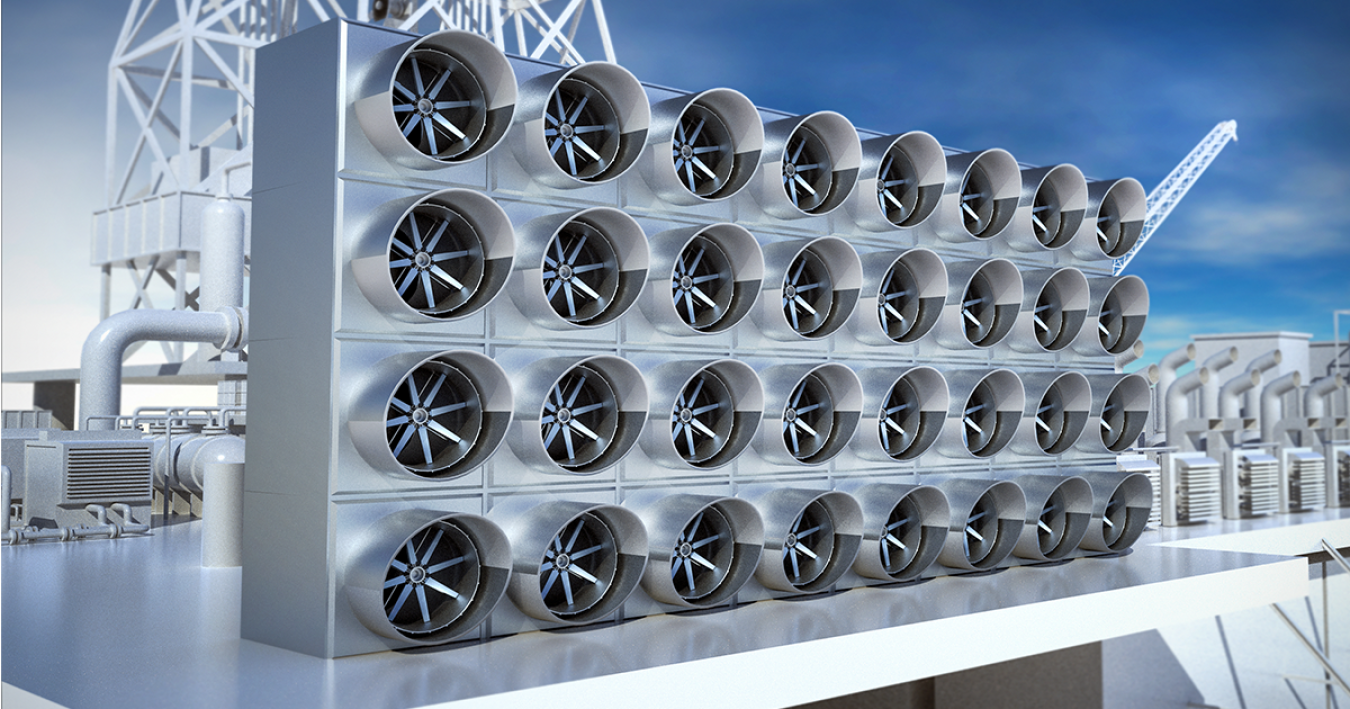A new U.S. Department of Energy report finds promise in pairing nuclear reactors with direct air capture system.
September 7, 2023
A new U.S. Department of Energy (DOE) report finds promise in pairing nuclear reactors with carbon dioxide removal technologies, including direct air capture.
According to the study, advanced reactors could lower the levelized cost of certain direct air capture technologies by up to 13 percent over non-nuclear-powered systems.
The pairing could also boost their performance and market feasibility—further supporting the Biden Administration’s goal of a net-zero economy by 2050.
A Closer Look at the Report
The Assessment of Nuclear Energy to Support Negative Emission Technologies report is an initial exploration into the role nuclear power plants could play in supporting a variety of negative emissions technologies.
Researchers found direct air capture to be an especially promising partner.
The study focused on pairing low-temperature solid sorbent and high-temperature liquid solvent direct air capture systems with three advanced reactor types—an advanced pressurized water reactor, a sodium-cooled fast reactor, and a very high temperature reactor.
Both direct air capture systems were selected for the analysis based on available data and previous research by the National Energy Technology Laboratory.
In the study, researchers analyzed solid direct air capture systems using nuclear heat and electricity. They also looked at a combination of natural gas heat and nuclear electricity for liquid direct air capture plants.
They then compared those results to previous direct air capture studies that were fully powered by fossil fuels.
DIRECT AIR CAPTURE INFOGRAPHIC
Reduced Costs, Improved Performance
Direct air capture is one of the most mature carbon-removal technologies available, but it is an energy-intensive process that leads to high costs.
The systems need electricity to power fans, pumps, compressors, water cooling systems, and air separation units. They also need heat to drive the chemical reactions that regenerate the solvent or sorbent and concentrate the carbon dioxide.
Results from the study showed that pairing the systems with any of the three reactor types would benefit from the reactors’ large amount of carbon-free and constant electricity output.
Solid direct air capture systems would benefit from the reactors’ low-temperature heat and, with future technological improvements, liquid direct air capture systems could benefit from high-temperature heat provided by sodium-cooled fast reactors and very high temperature reactors.
When compared to previous studies of direct air capture systems powered by fossil fuel sources, nuclear reactors could lower the levelized cost by up to 13 percent for solid direct air capture systems and up to 7 percent for liquid systems, making them more economic to deploy.
Leveraging the carbon-free electricity and heat from advanced reactors would also allow the systems to be smaller and less expensive to operate since their emissions footprint would be less compared to traditional systems that are powered by natural gas or the electric grid.
What’s Next?
DOE’s Office of Nuclear Energy Systems Analysis & Integration campaign conducted the study with contributions from researchers from Argonne National Laboratory, Idaho National Laboratory, and the National Energy Technology Laboratory.
The initial results confirm nuclear energy’s potential in reducing carbon dioxide removal costs for both direct air capture systems.
However, more analysis is needed to identify optimal systems, including the use of nuclear’s thermal energy with liquid direct air capture systems to minimize the need for natural gas, in addition to considering other emerging direct air capture technologies.
Researchers also found potential benefits for using nuclear energy with other negative emission technologies, including carbon capture using biomass, seawater, and basalt rocks. Additional research will determine their full technical and economic compatibility with various reactor types.
The Path to Net-Zero
DOE estimates reaching the Biden Administration’s goal of net-zero emissions by 2050 will require between 400 million and 1.8 billion metric tons of carbon dioxide removed from the atmosphere each year.
The Department recently announced more than $1 billion to develop two commercial direct air capture facilities in Texas and Louisiana through its Direct Air Capture Hub program funded through the Bipartisan Infrastructure Law.
This study, along with future follow-on reports, will further support the development and deployment of carbon capture technologies in order to create good high-paying jobs on our path to clean energy economy.
Read the full report HERE.
Dr. Michael Goff

Dr. Michael Goff is the Principal Deputy Assistant Secretary for the U.S. Department of Energy’s Office of Nuclear Energy. Prior to joining the office as the PDAS, Dr. Goff was on assignment from Idaho National Laboratory (INL) to the Office of Nuclear Energy, where he was serving his third term as senior advisor to the Assistant Secretary. Dr. Goff also served a multi-year assignment as the assistant director for Nuclear Energy/Senior Policy Advisor in the Office of Science and Technology Policy in the Executive Office of the President. He has held several management and research positions over more than 30 years at INL and Argonne National Laboratory.
Dr. Goff has more than 70 publications related to the nuclear fuel cycle including separations technology, high-level waste development, and safeguards. Dr. Goff has a bachelor's degree of nuclear engineering (1986), a MSNE (1988), and a Ph.D. in nuclear engineering (1991), all from Georgia Tech.

